Pelvic Organ Prolapse: Surgery for Incontinence
The pelvic organs include the organs of your reproductive system and your urinary tract. The pelvic organs are supported by pelvic floor muscles. Pelvic floor muscles can weaken. This may cause one or more pelvic organs to fall out of place (prolapse). Pelvic organ prolapse can contribute to stress urinary incontinence (SUI). This is trouble controlling the flow of urine out of the body. You may have surgery to treat SUI. During this surgery, a prolapse can be fixed. Your surgeon can discuss the details of different surgery procedures with you.
Pelvic organ prolapse: common types
|
Cystocele. This is when the bladder sags into the vagina. To fix this, the bladder is moved back into its normal position. It's then sewn into place. The tissue between the vagina and bladder may be strengthened for better support to keep the bladder from sagging.
|
Uterine prolapse. This is when the uterus sags into the vagina. The uterus may fall as far as the opening of the vagina. To fix this, the uterus is often removed (hysterectomy). Or the uterus may be sewn back into place.
|
|
Rectocele. This is when the rectum bulges into the vagina. An enterocele (much less common) is when the small intestine bulges into the vagina. During SUI surgery, the bulge in the rectum or small intestine can be fixed.
|
Vaginal vault prolapse. This is when the walls of the vagina fall in on themselves. It can happen if the uterus has been removed. Surgery can be done to lift the vagina and hold it in place.
|
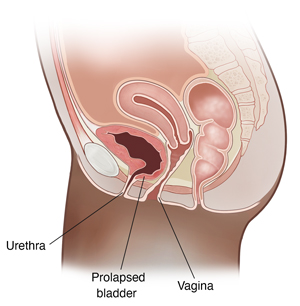 |
| Cystocele. |
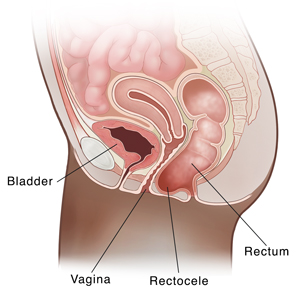 |
| Rectocele. |
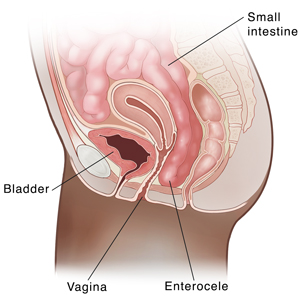 |
| Enterocele. |
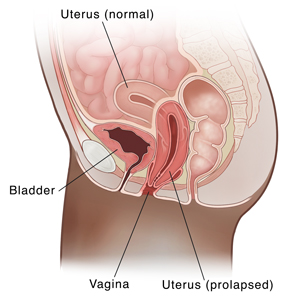 |
| Uterine prolapse. |
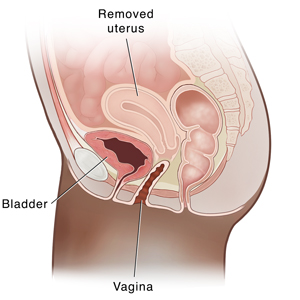 |
| Normal post-hysterectomy anatomy. |
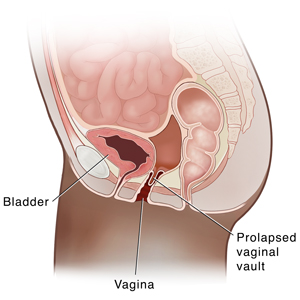 |
| Vaginal vault prolapse. |
Risks and possible complications of this surgery
-
Infection
-
Bleeding
-
Blood clots
-
Risks of anesthesia
-
Damage to nerves, muscles, or nearby pelvic structures
-
Prolapse of the pelvic organ or organs happening again
© 2000-2025 The StayWell Company, LLC. All rights reserved. This information is not intended as a substitute for professional medical care. Always follow your healthcare professional's instructions.